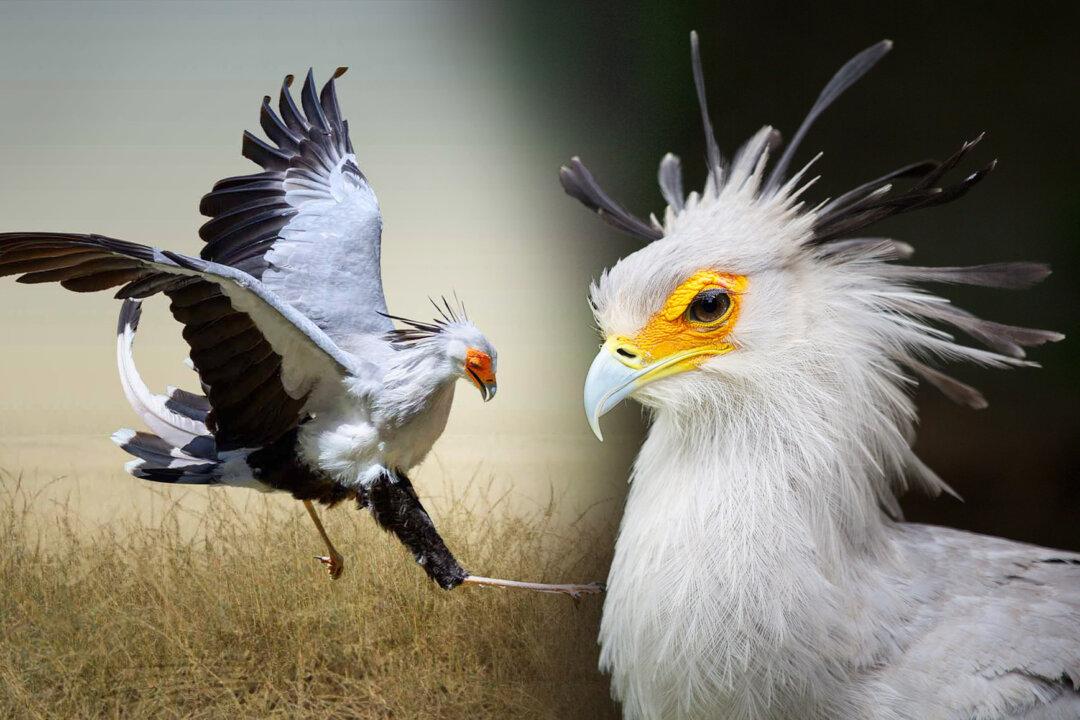The towering bird Sagittarius serpentarius raises its long, crane-like leg over its distracted slithering prey and strikes with the ferocity and accuracy of the great eagle raptors the rest of its body so resembles.
In less than the blink of an eye, its taloned claws stomp the ground with a great many pounds of impact, breaking the head of its snake victim, making a morning meal for the enormous African bird of prey at sunrise. More commonly called the secretarybird, this very large, mostly landbound raptor is both beautiful and deadly.






